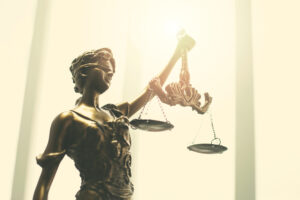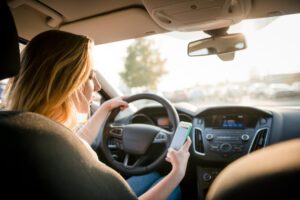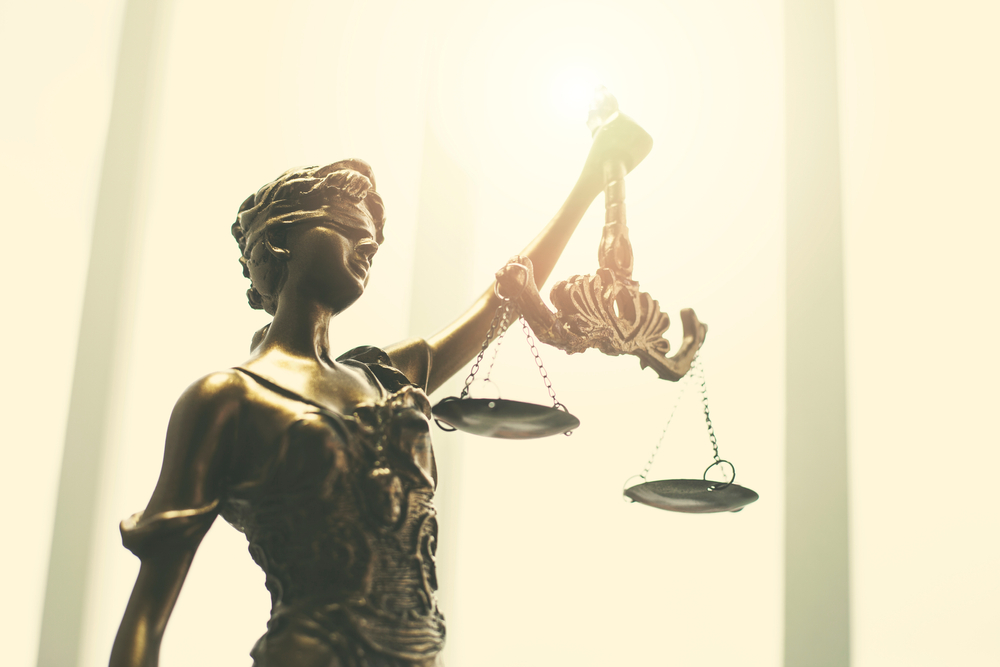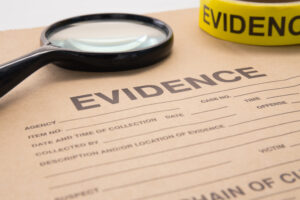The person at fault for a T-bone accident is typically the one who is financially liable for its consequences. As such, correctly identifying that individual is a prerequisite to getting fair compensation for property damage, medical bills, pain and suffering, and more.
If a T-bone accident injures you, a Chicago car accident lawyer can gather evidence to identify the at-fault parties, calculate the amount they owe you, and negotiate with their insurance provider to get you the money you deserve.
What Is a T-Bone Accident?

In a T-bone accident, the car struck on its side often suffers the worst damage. This is because the sides of cars do not offer as much protection as the front or rear, which have crumple zones to minimize the force of impact. It’s also why people in that vehicle are more likely to suffer severe injuries, particularly if they’re sitting on the side the other driver struck.
T-bone accident cases often involve disputes about fault, which usually rests with the driver who broke the traffic rules. If you get into a T-bone accident, you should talk to a knowledgeable accident lawyer as soon as possible. They can investigate the accident to determine who is at fault and how they can demand that person compensate you accordingly.
Why Are T-Bone Accidents So Dangerous?
T-bone accidents are among the most hazardous types of car collisions. The National Safety Council estimates that while these collisions make up 33 percent of total traffic accidents, they account for the highest percentage of injuries and deaths, at 45 percent each.
Here is what makes T-bone accidents especially dangerous:
- Lack of Side Protection: Cars have less protection on their sides than on the front or rear, where crumple zones absorb more of the force. When a car sustains a hit on the side in a T-bone accident, the thin door and window provide little shielding against the incoming force. The impact can directly affect the passengers, causing severe injuries. Some cars do have some safety features like side or curtain airbags, but they often are not enough to fully protect against the force of a T-bone collision.
- High Impact Speed: T-bone accidents often happen at intersections where one driver fails to stop as required. This means the striking car is often moving at a considerable speed before the collision. The greater an object’s speed, the greater its force on impact. This increases the chance of severe damage to the vehicle and serious injuries to the people inside. Speed plays a key role in the severity of many T-bone accidents.
- Risk of Car Rolling Over: Another danger in T-bone accidents is the risk that the force of the collision will cause the struck vehicle to overturn. If the impact is strong enough, it can tip the car over, especially if the point of collision is near the vehicle’s wheels. A rollover can trap passengers inside, making it harder for rescuers to reach them. It also increases the risk of additional injuries or collisions as the car rolls.
- Direct Impact on Passengers: In T-bone accidents, the colliding car often directly hits the other vehicle’s passenger compartment. Unlike frontal or rear-end collisions, where the engine or trunk can absorb some impact, the side of the car offers minimal buffer. This means passengers on the struck side are vulnerable to the full force of the impact and life-threatening injuries.
- Increased Chance of Multiple Collisions: There’s a high risk of subsequent collisions after the initial impact in a T-bone accident. The struck car might spin out of control and hit other vehicles, objects, or pedestrians. This chain reaction can lead to multiple impacts, increasing the potential for additional injuries and damage. It complicates the accident scene and can make emergency response and investigation more challenging.
- Difficulty Exiting the Vehicle: The severe damage in T-bone accidents can make it difficult for passengers to exit the vehicle. Doors on the side of impact can jam shut or crush inward, trapping occupants inside. This is particularly dangerous if there’s a fire or the vehicle is in a hazardous location, like the middle of an intersection.
Common Causes of T-Bone Accidents
T-bone accidents are not random occurrences. They often result from specific driving behaviors and situational factors. Below are some common examples of factors that contribute to T-bone accidents.
Running Red Lights

Failing to Yield at Traffic Signs
Another common cause of T-bone accidents is failure to yield when required by traffic signage to do so. This can happen when a driver rolls through a stop sign, proceeds through a yield sign without slowing down, or misjudges who has the right of way at an intersection.
This type of error can lead to a driver entering an intersection directly into or in the path of a vehicle with the right of way, resulting in a T-bone collision.
Distracted Driving
Activities like texting, eating, or even conversing with passengers can divert a driver’s attention from the road. This inattention can cause them to miss important traffic signals or fail to notice other vehicles, particularly at intersections where the risk of a side-impact collision is highest.
Speeding
Speeding is another common factor in T-bone accidents. Drivers traveling at high speeds are less able to stop in time for traffic signals and are likely to misjudge the time it takes to safely pass through an intersection. The higher the speed at the time of the collision, the more severe the impact and the greater the risk of serious injury or death.
Driving Under the Influence
Impairment from alcohol or drugs severely affects a driver’s judgment, reaction time, and overall ability to drive safely.
Intoxicated drivers are more likely to ignore traffic signals, misjudge distances, and make risky maneuvers, leading to T-bone collisions. These accidents are often severe due to the impaired driver’s inability to react quickly or take appropriate evasive actions.
Driver Fatigue
Extreme fatigue is just as dangerous as intoxication when it happens behind the wheel of a car. Drowsy drivers often struggle with blurry vision, poor reaction time, and a general lack of attentiveness.
If drivers don’t get adequate rest or drive at times when they normally sleep, they are more likely to violate right-of-way rules at intersections and T-bone other vehicles.
Poor Visibility
Poor visibility due to weather or ambient conditions like fog, rain, or darkness can greatly increase the risk of T-bone accidents. Drivers in these conditions are more likely to overlook traffic signals, misjudge the distance of oncoming vehicles, or fail to notice vehicles until it is too late.
Regardless, drivers must still maintain full control of their vehicles in all conditions and can face liability if they don’t.
Failure to Judge Oncoming Traffic Speed
Misjudging the speed of oncoming traffic when making turns is a common mistake that leads to T-bone accidents.
A driver might believe they have enough time to turn, only to find that oncoming vehicles are approaching faster than they anticipated. This misjudgment often results in the oncoming vehicle striking the turning vehicle on the side.
Illegal or Unsafe Left Turns
Making illegal or unsafe left turns takes a driver into the path of oncoming traffic that might T-bone them. This typically occurs when a driver turns left at an intersection without a clear view of traffic or when there’s insufficient time to complete the turn safely.
These accidents are particularly dangerous as the turning vehicle often sustains a hit directly on the passenger side, where there is less structural protection.
Mechanical Failures
Mechanical failures, such as brake or steering problems, can lead to a loss of vehicle control, resulting in T-bone accidents. For example, if a vehicle’s brakes fail as it approaches an intersection, the driver might be unable to stop, leading to a preventable collision with cross traffic.
Evidence in T-Bone Accident Cases
In a T-bone accident case, gathering the right evidence is key to understanding what happened and determining who is at fault.
Here is some common evidence a lawyer might use to build your T-bone accident case:
- Witness statements
- Photos of the accident scene
- Traffic or surveillance camera footage
- Dashcam recordings
- Vehicle damage reports
- Medical records of crash injuries
- Cell phone records
- Skidmark analysis
- Weather or traffic reports
- GPS data
- Vehicle maintenance records
- Toxicology test results
- Expert witness testimony
- Road condition reports
- Accident reconstruction reports
- Employment or income loss records
- Personal journal entries
What a T-Bone Accident Lawyer Can Do for You
A lawyer’s involvement can significantly affect the outcome of your T-bone accident claim.
They work hard to protect your rights and demand the meaningful results you deserve by:
- Investigating the Accident: Your T-bone accident lawyer will start by thoroughly investigating the accident. They will gather as much evidence as possible, including witness statements, photos of the accident scene, and police reports. This investigation allows your attorney to build a strong foundation for your claim.
- Analyzing Evidence: After collecting evidence, your lawyer will analyze it to understand how the accident occurred and who is at fault. They will examine details like traffic camera footage, vehicle damage reports, and skid mark analysis reports to determine the sequence of events.
- Consulting Experts: In complex cases, lawyers consult with accident reconstruction experts to get professional opinions on how the accident happened and how it affected their clients. These experts can provide valuable insights that strengthen your claim, especially in complex scenarios.
- Determining Liability: The point of these investigations is to understand whose behavior led to the accident and whether anyone shares liability with them. Your lawyer wants to know everyone who could be liable for the accident and your subsequent injuries.
- Evaluating Your Claim Value: A key part of your claim is determining how much compensation the liable parties owe you. Your lawyer will consider your medical expenses, income losses, vehicle repair costs, and any long-term effects of your injuries. They will seek all the compensation you deserve for the full extent of the harm you suffered.
- Providing Legal Advice: Your lawyer will offer you legal advice throughout your case. They will help you understand your rights, explain the legal process, and advise you on decisions about your claim.
- Handling Insurance Companies: Dealing with insurance companies is challenging, especially during a painful recovery. Your lawyer will communicate with insurers on your behalf and negotiate aggressively to get you fair compensation for your injuries.
- Filing Legal Documents: As is often the case with legal procedures, accident claims necessitate a lot of paperwork. Your lawyer will complete and file the necessary documents, ensuring they meet all legal requirements and deadlines. This includes filing a lawsuit if necessary.
- Negotiating Settlements: Most successful accident claims end in a settlement out of court. Your lawyer will negotiate with the other party to reach a settlement that fairly compensates you without the need for a time-consuming and expensive trial.
- Representing You in Court: If the other party refuses to make you a fair offer, your lawyer will represent you at trial. They will prepare and present your case before a judge or jury, advocate on your behalf, and work toward a favorable verdict.
- Supporting You Throughout the Process: Dealing with an accident claim is often stressful. Your lawyer will support you throughout the process, keeping you informed and addressing your concerns as they arise.

